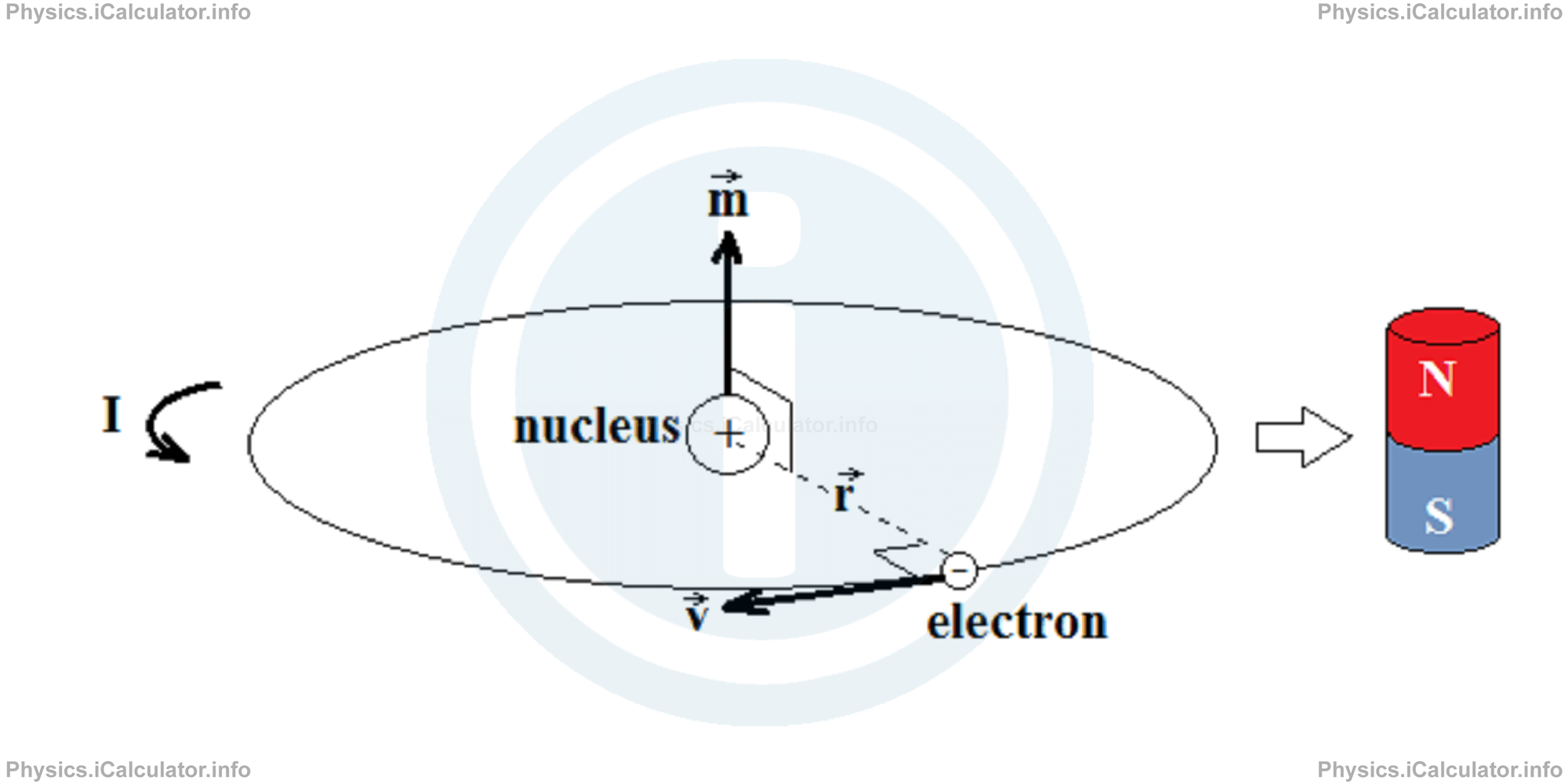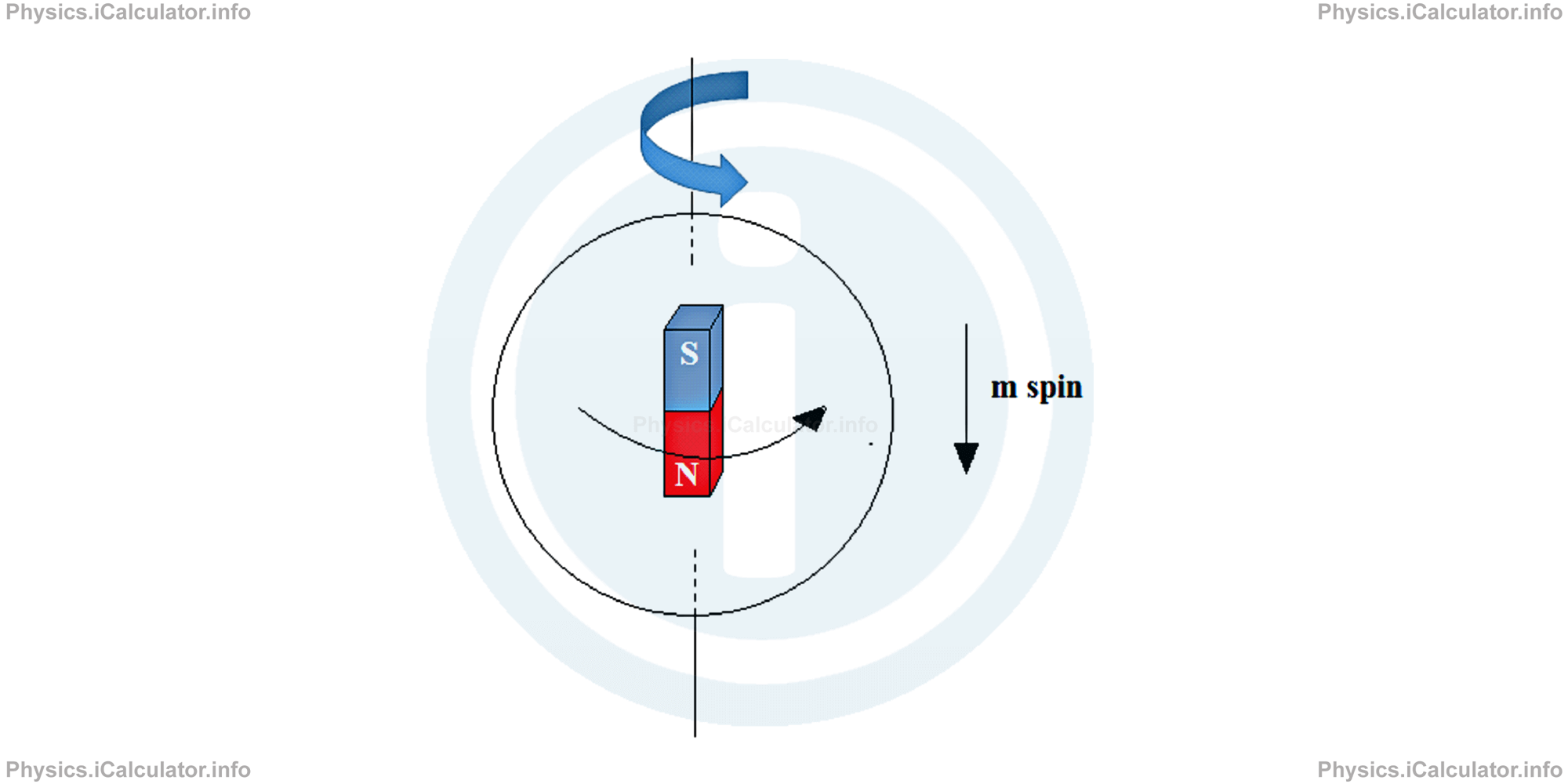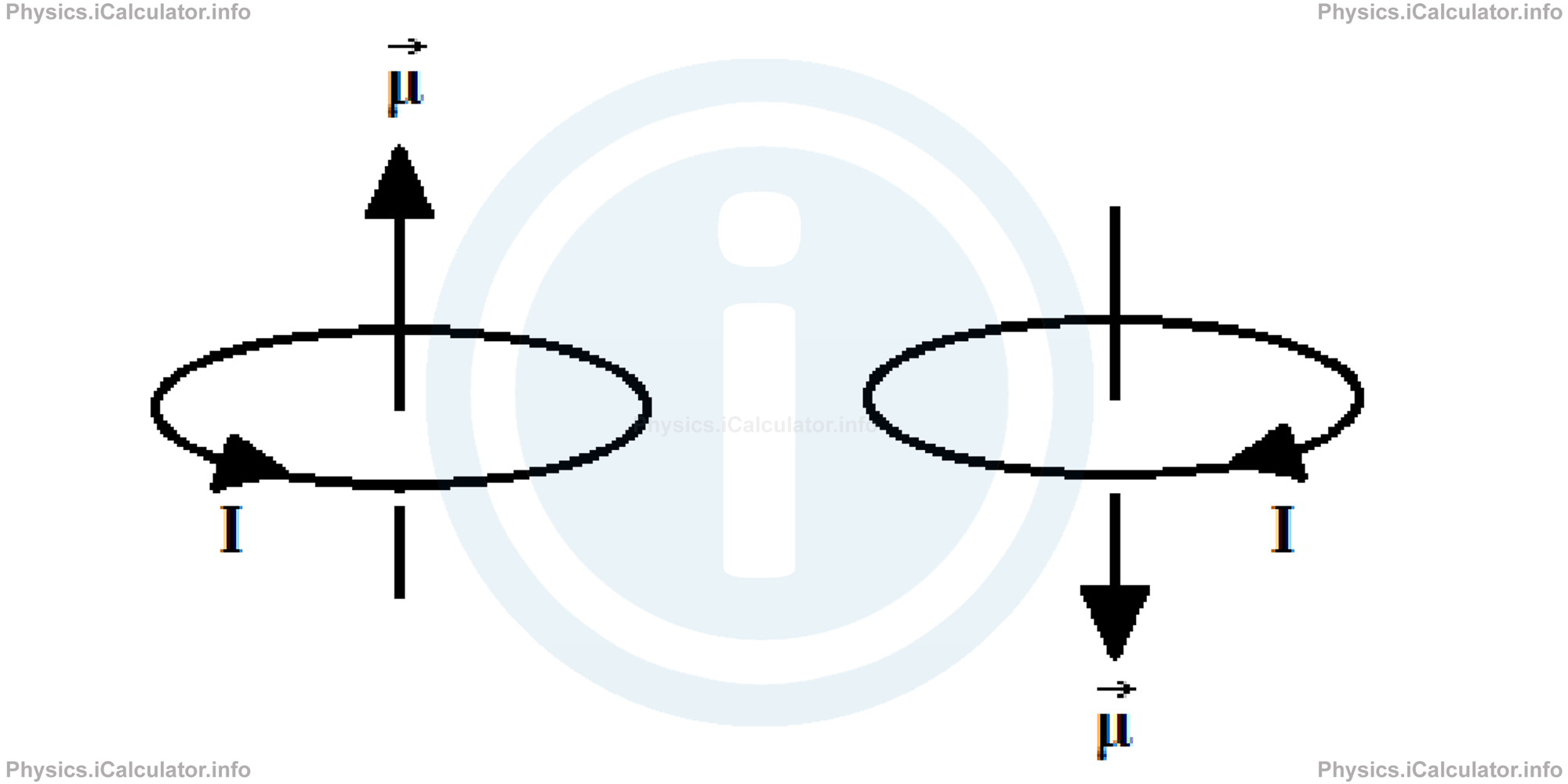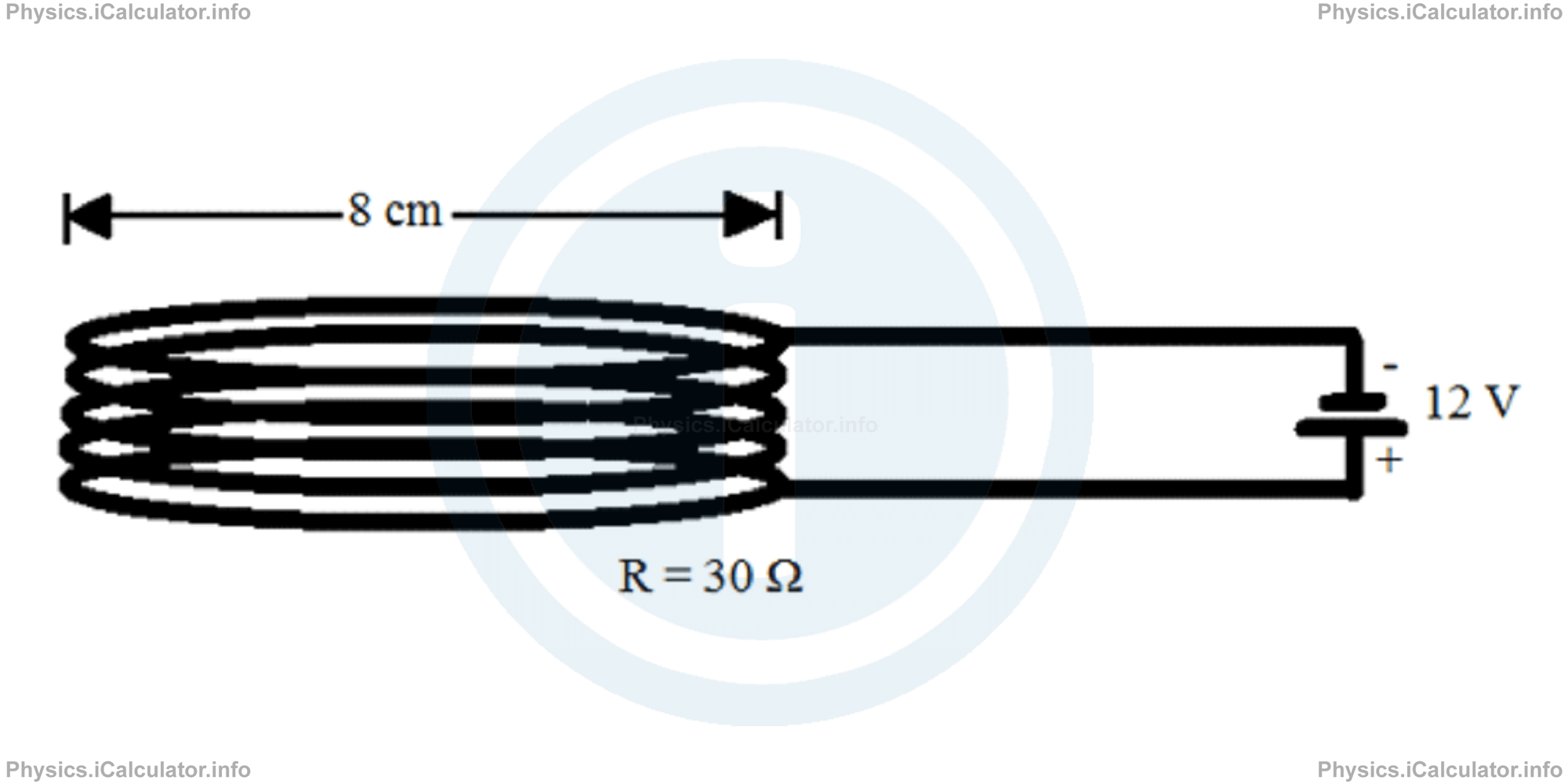Menu
Physics Lesson 16.5.1 - What is Magnetic Moment? Magnetic Dipole Moment
Please provide a rating, it takes seconds and helps us to keep this resource free for all to use
Welcome to our Physics lesson on What is Magnetic Moment? Magnetic Dipole Moment, this is the first lesson of our suite of physics lessons covering the topic of Magnetic Dipole Moment, you can find links to the other lessons within this tutorial and access additional physics learning resources below this lesson.
What is Magnetic Moment? Magnetic Dipole Moment
Magnetic moment is a vector quantity that describes magnetic processes. More specifically, it indicates the strength of a magnetic dipole, which represents the relationship between the external magnetic field and the strength of that field itself. Remember, a dipole is the smallest possible magnet obtained when an elementary positive charge (proton) interacts with a negative one (electron).
A magnetic dipole can arise when current flows in circular closed path and since it is a vector, it depends on the direction of the current. This property is used in electrical engineering as a basis for electromagnets, motors or generators.
Generally, there can be two origins for the creation of the magnetic moment:
- The first one involves an electric and / or circular current having some current density distribution

- The second origin of magnetic moment creation involves particles having their own angular momentum, the so-called spins.

In most cases we are more interested in magnetic dipole moment μ⃗ rather than in magnetic moment m⃗ itself. In simple words, a magnetic dipole moment represents a magnetic north and south pole separated by a small distance.
As discussed in tutorial 16.3 "Magnetic Force on a Current Carrying Wire. Ampere's Force", a torque acts to rotate a current carrying coil placed inside a magnetic field. In this case, the coil behaves like a bar magnet placed inside another magnetic field (as shown in the two figures above). Therefore, we say the current carrying coil acts like a magnetic dipole as it meets the conditions to be as such. In scientific terms, the quantity used to describe the torque of a coil due to the turning effect of magnetic field on this coil is called magnetic dipole moment, μ⃗, as discussed earlier.
The direction of magnetic dipole moment is determined through the same right hand rule used when determining the direction of magnetic field produced by a current carrying wire. This means if we grasp the magnetic dipole moment vector with the right hand so that the thumb shows the direction of magnetic dipole moment, the four fingers show the direction of current.
In addition, the direction of magnetic dipole moment vector is normal to the plane of the loop, as shown in the figure below.

The equation used to calculate the magnitude of magnetic dipole moment μ produced by a current carrying coil is
where N is the number of turns in the coil, I is the current in the coil and A is the area of the coil. Obviously, the unit of magnetic dipole moment is [A ∙ m2].
Example 1
A current carrying coil having a resistance of 30 Ω is connected to a circuit supplied by a 12 V battery as shown in the figure.

The diameter of coil is 8 cm. Calculate the magnitude of the magnetic dipole moment produced by the coil.
Solution 1
Clues:
ε = 12 V
R = 30 Ω
d = 8 cm = 0.08 m
N = 5 (number of turns in the coil as seen in the figure)
μ = ?
First, we calculate the current flowing in the coil using the Ohm's Law. We have:
= 12V/30Ω
= 0.4 A
Second, we calculate the area of coil. We have:
= 3.14 ∙ (0.08m/2)2
= 3.14 ∙ 0.0016m2
= 0.005 m2
Now, let's calculate the magnitude of magnetic dipole moment. We have
= 5 ∙ 0.4A ∙ 0.005 m2
= 0.01 A ∙ m2
You have reached the end of Physics lesson 16.5.1 What is Magnetic Moment? Magnetic Dipole Moment. There are 4 lessons in this physics tutorial covering Magnetic Dipole Moment, you can access all the lessons from this tutorial below.
More Magnetic Dipole Moment Lessons and Learning Resources
Whats next?
Enjoy the "What is Magnetic Moment? Magnetic Dipole Moment" physics lesson? People who liked the "Magnetic Dipole Moment lesson found the following resources useful:
- Definition Feedback. Helps other - Leave a rating for this definition (see below)
- Magnetism Physics tutorial: Magnetic Dipole Moment. Read the Magnetic Dipole Moment physics tutorial and build your physics knowledge of Magnetism
- Magnetism Revision Notes: Magnetic Dipole Moment. Print the notes so you can revise the key points covered in the physics tutorial for Magnetic Dipole Moment
- Magnetism Practice Questions: Magnetic Dipole Moment. Test and improve your knowledge of Magnetic Dipole Moment with example questins and answers
- Check your calculations for Magnetism questions with our excellent Magnetism calculators which contain full equations and calculations clearly displayed line by line. See the Magnetism Calculators by iCalculator™ below.
- Continuing learning magnetism - read our next physics tutorial: Ampere's Law
Help others Learning Physics just like you
Please provide a rating, it takes seconds and helps us to keep this resource free for all to use
We hope you found this Physics lesson "Magnetic Dipole Moment" useful. If you did it would be great if you could spare the time to rate this physics lesson (simply click on the number of stars that match your assessment of this physics learning aide) and/or share on social media, this helps us identify popular tutorials and calculators and expand our free learning resources to support our users around the world have free access to expand their knowledge of physics and other disciplines.
Magnetism Calculators by iCalculator™
- Angular Frequency Of Oscillations In Rlc Circuit Calculator
- Calculating Magnetic Field Using The Amperes Law
- Capacitive Reactance Calculator
- Current In A Rl Circuit Calculator
- Displacement Current Calculator
- Electric Charge Stored In The Capacitor Of A Rlc Circuit In Damped Oscillations Calculator
- Electric Power In A Ac Circuit Calculator
- Energy Decay As A Function Of Time In Damped Oscillations Calculator
- Energy Density Of Magnetic Field Calculator
- Energy In A Lc Circuit Calculator
- Faradays Law Calculator
- Frequency Of Oscillations In A Lc Circuit Calculator
- Impedance Calculator
- Induced Emf As A Motional Emf Calculator
- Inductive Reactance Calculator
- Lorentz Force Calculator
- Magnetic Dipole Moment Calculator
- Magnetic Field At Centre Of A Current Carrying Loop Calculator
- Magnetic Field In Terms Of Electric Field Change Calculator
- Magnetic Field Inside A Long Stretched Current Carrying Wire Calculator
- Magnetic Field Inside A Solenoid Calculator
- Magnetic Field Inside A Toroid Calculator
- Magnetic Field Produced Around A Long Current Carrying Wire
- Magnetic Flux Calculator
- Magnetic Force Acting On A Moving Charge Inside A Uniform Magnetic Field Calculator
- Magnetic Force Between Two Parallel Current Carrying Wires Calculator
- Magnetic Potential Energy Stored In An Inductor Calculator
- Output Current In A Transformer Calculator
- Phase Constant In A Rlc Circuit Calculator
- Power Factor In A Rlc Circuit Calculator
- Power Induced On A Metal Bar Moving Inside A Magnetic Field Due To An Applied Force Calculator
- Radius Of Trajectory And Period Of A Charge Moving Inside A Uniform Magnetic Field Calculator
- Self Induced Emf Calculator
- Self Inductance Calculator
- Torque Produced By A Rectangular Coil Inside A Uniform Magnetic Field Calculator
- Work Done On A Magnetic Dipole Calculator